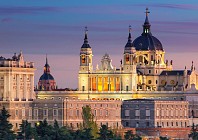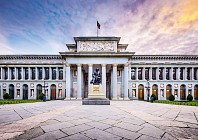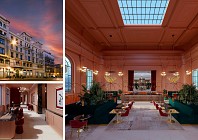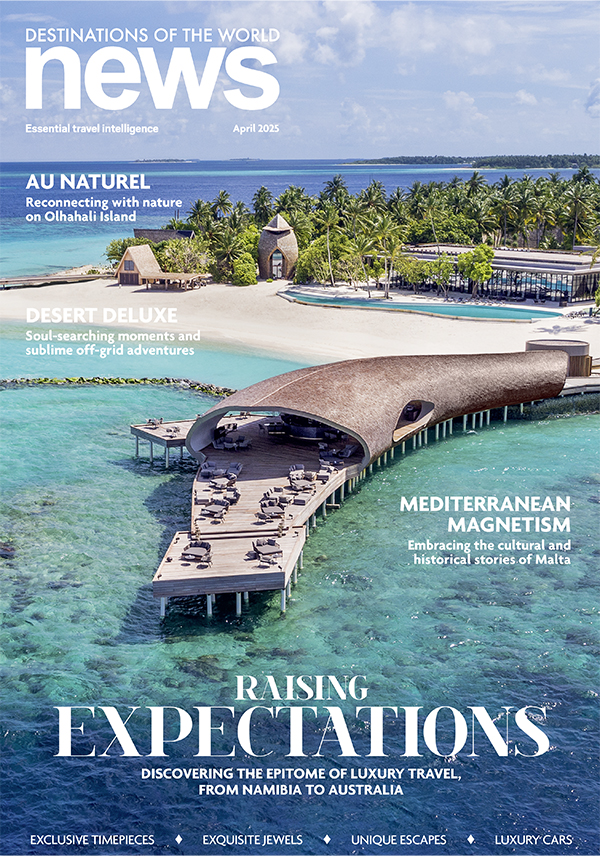On the dusty, sinuous La Vía Verde de la Subbética, a time-worn path in southern Spain, I trade my bicycle for a horse. I feel a little guilty. On my VBT Bicycling and Walking Vacations tour, the hybrid two-wheeler has been a loyal companion. So far, I’ve biked nearly 145 kilometres through Spain’s most sunbaked region, Andalusia. I’ve cruised through fields of sunflowers, orange orchards and neat files of towering corn. I’ve steered my way through bone-white villages and in the shade cast by Moorish castles, I’ve caught my breath – more than once.
But today, halfway along this rural, recreational route formed from a former railroad line, and somewhere near the remote pueblo (village) of Zuheros, I stop biking. Inside a natural park profuse with olive trees, I abandon my bike beside a fragrant bush of oleander and clamber onto the bare back of a snow-white Andalusian horse – an equine breed recognised for its elegance since the 15th century. Princely, this creature dances rather than walks. On his sturdy back, I feel as though I should be wearing a flamenco dress with cascading ruffles. “Olé,” I say, to nobody in particular.
These are the kind of magical encounters one tends to have along the cycling back roads of Spain. For a moment, I consider continuing the journey on horseback, but I’m snapped back from my reverie by my fellow biking vacationers who roll past, pumping their legs with unmitigated relish. “You’ll be late for lunch,” they call, as they pedal past. Bidding farewell to the farmer and his horse, I decide to continue on my two-wheeled adventure. I have kilometres to zigzag, hills to climb, a monastery to visit and olive oil makers to meet before dusk.

With trekking and biking trips around the world, the US-based VBT Bicycling and Walking Vacations (www.vbt.com; +1 800 245 3868) has led active holidaymakers on expeditions since 1971, maintaining long-term relationships with local vendors from South America to South Africa. Believing that intrepid travellers like to root into the culture, the company tailors the expeditions to fit the landscape, bringing resident luminaries to the group as lecturers and offering language lessons, wine tastings, cooking courses and stays in five-star hotels and lodges which evoke sense of place.
On this trip, we bed down in a restored convent in Granada, in an ancient (refurbished) monastery near Córdoba, in the centuries-old Jewish Quarter in Seville, and in a 19th-century olive-growing hacienda tucked into the olive-abundant Andalusian countryside. To unpeel the layers of a destination, we are taken to dine at restaurants famed for their regional dishes, while itineraries include visits to both iconic sites and lesser-known secrets. To ride or walk with VBT is to enter the pages of their little black book: to discover the best boutiques, meet the canniest city guides and enjoy the ministrations of the area’s most revered artisans.
I join this intimate group bike tour to return to Andalusia – a place I once lived for a year or more. Rich in beauty, resplendent with personality, Andalusia holds Spain’s largest state and its southernmost point, Tarifa, is only 14 kilometres across the sea from Africa. For centuries, this allowed easy access from the east, bringing ancient civilisations from the Romans and the Phoenicians to the Moors. Their legacies pave every aspect of life here. Most influential, the Caliphate remained for 800 years, leaving a wealth of architecture, additions to the language and lifestyle and bestowing prodigious gravitas to the civilisation. A fusion of many worlds, Andalusia is a soulful place and one best enjoyed at a slower pace.

Alfonoso in Andalucia, Spain
For me, pedalling through the region defines the essence of Spain. I hear it in sultry flamenco, an art form that incorporates song, dance and a type of classical guitar so poignant and palpitating, it mimics a fast-beating heart. I recognise it in the complex, mingled culture and architectural fabric, where Moorish buildings, age-old Jewish quarters and ornate Catholic cathedrals stand side-by-side.
I see it in the reign of revered matadors, the graceful heroes of the bullring – especially in flamboyant Seville and fanciful Córdoba – and in elderly men, clad in flat, black hats who sit in parks, entranced by day-long domino games. I smell it when the scent of garlic competes with the perfume from lemon blossoms. I taste it during the ubiquitous, nightly ritual called tapeando, which keeps locals up late. Doing it, we drift from one bodega to another. At each stop, we nibble a tapa (a small plate of regional fare) and sip a refreshing libation such as nutty local sherry – golden and luminescent, dry as Andalusian earth, and served in thimble-sized glasses.
My trip begins a few days before the official bike ride in Seville, where I stay at Hotel Alfonso XIII, a Luxury Collection Hotel and a former palace built for a king. A Mudéjar-influenced medley of ornamental towers, archways and antiques, the hotel channels nature with hues of white, cobalt blue and emerald green. It might be a legendary homage to the past, yet Alfonso’s modern amenities keep things contemporary, while gastronomically, it embraces the present with its river-view hot spot Ena (+34 954 91 71 60; www.enasevilla.com), helmed by Spanish celebrity chef Carles Abellan.

Granada, Spain by night
Opulently redefining Spanish tavern food, the indoor/outdoor eatery serves traditional Andalusian recipes such as a thick, tomato and breadcrumb soup called salmorejo, as well as edgier dishes loaded with modern touches from Abellan’s homeland, Catalonia. Fruity, bright sangria accompanies my meal on a hot afternoon. I nibble a light, citrus-intoned ceviche, flanked by creamy avocado, then walk from the hotel to the labyrinthine Barrio de Santa Cruz to visit the storied Flamenco Museum (+34 954 34 03 11; www.museodelbaileflamenco.com), which turns out to be one of the highlights of my trip.
The ride kicks off the next day in the fertile plain of the Guadalquivir River (from where Christopher Columbus set sail), about an hour from Seville. Our group comes together at Monasterio de San Francisco, where we meet our affable expert guides. Setting off, we pass by farmhouses, careen across dams, whiz by fields thronged with ruminating bulls and get distracted by gardens of bright flowers. We begin as a pack of twenty riders, yet as the day passes, we spread out.
One person boasts the pace of a jet plane, another the tempo of a tortoise; some people possess the propensity to get lost – others rise to lead. Some riders gossip as they pedal, and one man croons tunes so beautifully, his voice accompanies us like a soundtrack. An elfin woman stoops to pick flowers, attaches them to her helmet, and plies the road bouquet-adorned. Evocatively named pathways signal each day’s novel experience. The Wine Road or Route of the Fortresses, for example, sound so compelling we can barely wait to head out in the mornings.

Sevilla, Spain
A typical day, the Old Road to Córdoba ride (64 kilometres), takes us up a seemingly endless hill along the borders of the Sierra. Later, we pedal through a pueblo, then turn onto a rural road. Suddenly, crowning a bluff, we catch sight of the eighth-century, Arab-built Castle Aldmodovar, which glitters like a jewel-encrusted crown in the sunlight. We lunch at the VBT farmhouse; once the site of a Roman amphora factory, it is set on land which continues to reveal artefacts each time the fields are ploughed. The day ends in Córdoba, where we take time to explore the spell cast by the city and its famous, UNESCO-listed mosque. Nobody wants the experience to end. When we cross the finish line in Granada, we celebrate as old friends, with cheers and high fives and a visit to the city’s showpiece: the fairytale Alhambra. Struck by its geometric patterns, carved stucco patterns and tile work, it seems a grand finale – and I’m grateful I didn’t stay put on that horse.
Stay










